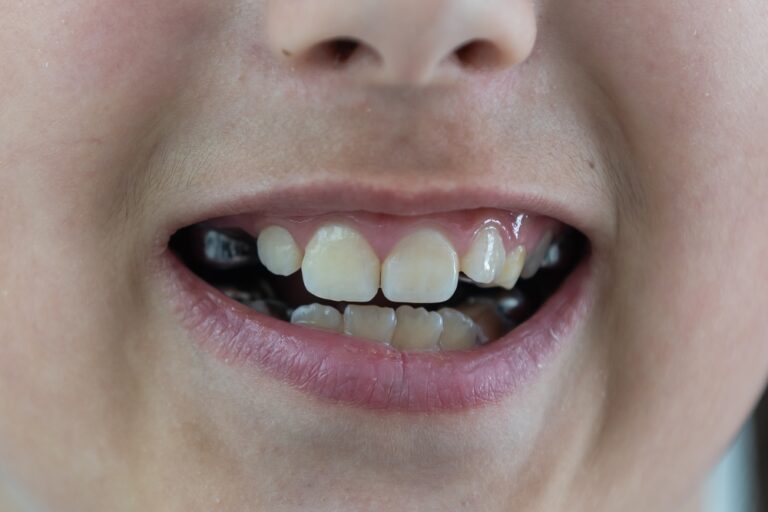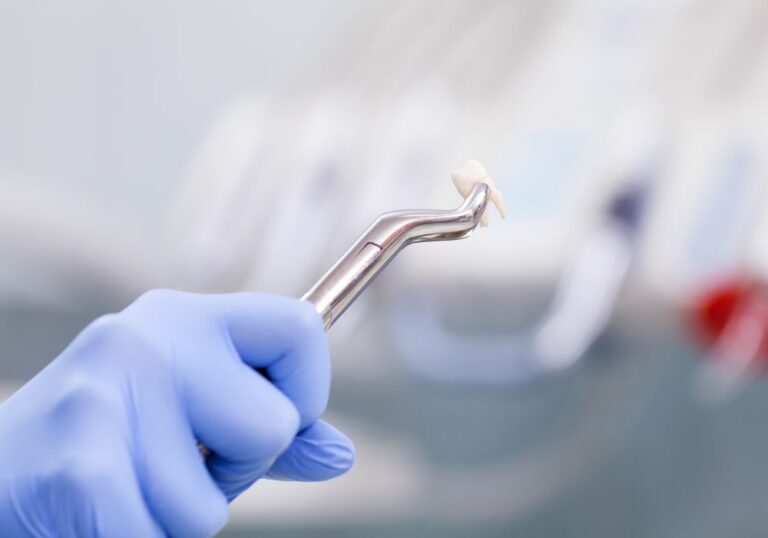Natal teeth, also known as neonatal teeth, are teeth that are present in a baby’s mouth at birth. Babies are usually born without teeth and get their first teeth between 4-7 months of age. However, in rare cases, some babies are born with one or more teeth already erupted through their gums. The incidence of natal teeth occurs in about 1 in every 2,000 to 3,500 births, with the condition more commonly seen in girls than boys.
While natal teeth may seem like an interesting curiosity, they can actually pose health risks for a newborn. Some of the key questions around natal teeth include:
- Are natal teeth more likely to be problematic or harmless?
- What are the potential benefits and risks of having natal teeth?
- How should natal teeth be managed by parents and pediatricians?
- What causes natal teeth to form?
This article will explore the good and bad aspects of natal teeth in detail.
What Causes Natal Teeth to Form?
The exact causes of natal teeth are not known, but some possible contributing factors include:
- Genetic factors – Some genetic syndromes like Hallermann-Streiff syndrome are associated with natal teeth. There may be a hereditary component in some cases.
- Environmental exposure – Exposure to certain environmental substances may play a role in disrupting dental development. However, no definitive connections have been found.
- Maternal health issues – Certain maternal health problems during pregnancy like malnutrition, gestational diabetes, preeclampsia, syphilis, or toxin exposure have been linked to natal teeth formation.
- Osteoblastic activity – Increased osteoblastic activity in utero may lead to advanced dental maturation and neonatal teeth eruption.
- Polygenic inheritance – Natal teeth likely have a polygenic mode of inheritance, meaning multiple genes contribute to expression of the condition rather than a single gene mutation.
The interplay between genetic, epigenetic, and environmental factors likely all contribute to the manifestation of natal teeth. More research is still needed on the exact etiology.
Potential Benefits of Natal Teeth
Although most natal teeth end up needing removal, there are some potential benefits in rare cases:
- May aid breastfeeding: Some studies have found that natal teeth can help a baby latch onto the breast and breastfeed more effectively in the first days of life. The teeth can gently hold onto the nipple and stimulate sucking. However, many dentists dispute this benefit, as natal teeth often cause breastfeeding problems.
- No teething pain: The early eruption of natal teeth means the infant won’t have to go through the pain and fussiness associated with normal primary tooth eruption between 4-7 months. But any benefits of avoided teething pain are outweighed by the high risks of natal teeth.
- Aids development: Natal teeth provide stability for tongue motions and may promote better developmental of chewing motions and jaw alignment early on. However, natal teeth may also impair proper tongue positioning.
- Harmless natal teeth: Occasionally, natal teeth are stable, healthy and don’t pose complications. If the natal teeth are further back in the mouth, don’t interfere with feeding or pose a choking hazard, they may be left in place by the dentist temporarily. However, this scenario is very rare, occurring in an estimated 1-10% of natal teeth cases.
In the vast majority of cases, pediatricians and dentists agree the risks outweigh any potential gains. Published research indicates natal teeth cause more harm than good in most instances.
Potential Risks and Complications of Natal Teeth
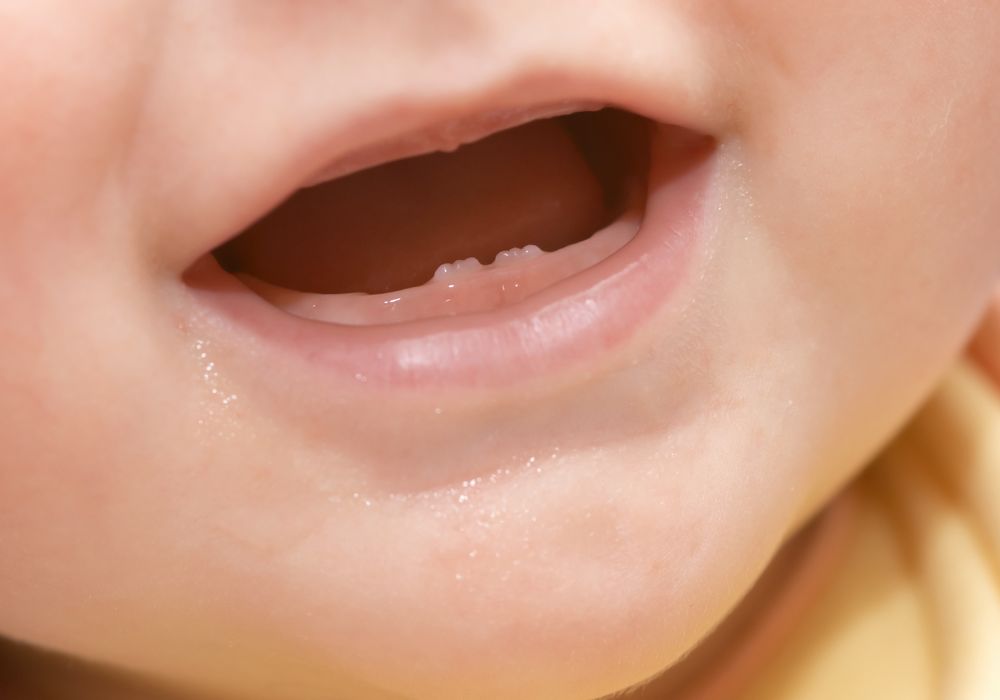
There are several significant risks and problems associated with natal teeth. Natal teeth have a poor prognosis compared to normal primary dentition. Complications may include:
| Risk/Complication | Description |
|---|---|
| Looseness | Natal teeth have poor root formation and the root is frequently incomplete. This makes the teeth extremely mobile with a weak connection to the gums, and easy to dislodge with minor movement or pressure. |
| Interference with breastfeeding | The presence of natal teeth can interfere with proper latching and feeding. Natal teeth often lacerate or injure the mother’s nipple and cause significant pain, injury or infection. Feeding is the most common and problematic issue with natal teeth. |
| Aspiration/choking | Loose natal teeth easily detach since they lack a stable connection to the gums and jaw. These detached teeth can become a choking hazard or be aspirated by the infant into the lungs. Babies have poor airway protection and uncoordinated swallowing, greatly increasing aspiration risks. |
| Injury to infant’s tongue/cheeks | An erupting natal tooth has sharp edges and may lack the usual enamel coating. These sharp teeth can cause abrasions, cuts or ulcerations on the delicate oral mucosal tissue or the underside of the tongue in a newborn. |
| Misalignment | Natal teeth may promote bad alignment of subsequently erupting primary teeth due to premature eruption and pushing on unerupted teeth buds. This can lead to crowded or crooked teeth later on. |
| Caries | The natal teeth themselves are at very high risk for early childhood caries (cavities). The enamel of natal teeth is often underdeveloped or thin, providing little protection against decay. |
Due to these many risks, the majority of pediatric dentists recommend removal of natal teeth as soon as possible after birth. Extraction is a simple procedure at a very young age.
Management of Natal Teeth
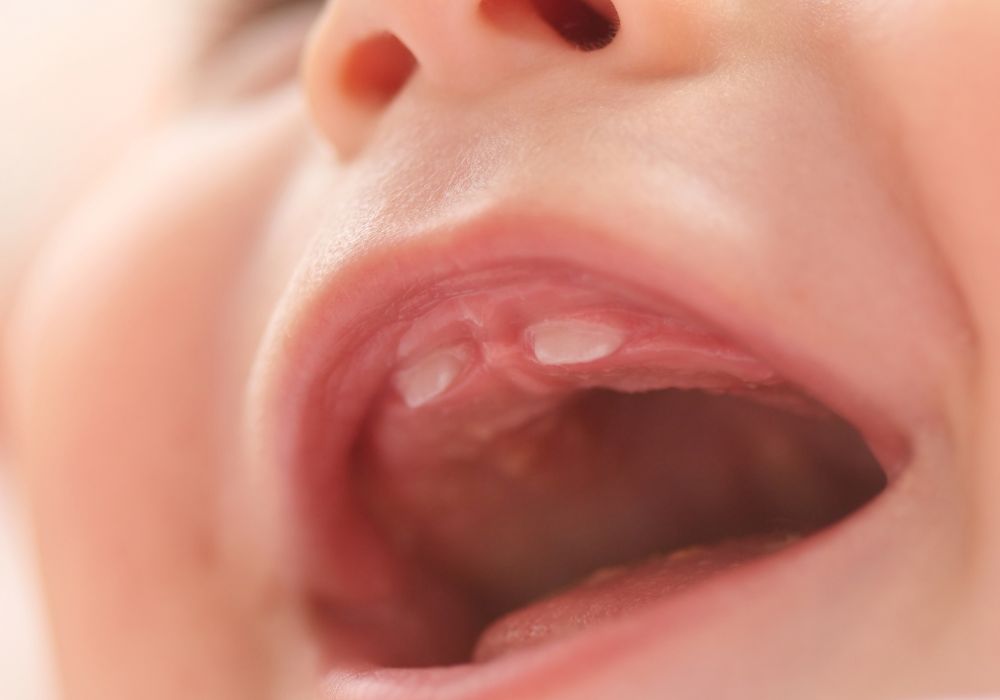
If your newborn is born with natal teeth, proper management is important to reduce complications:
- Consult a pediatric dentist as soon as possible, ideally within 1-2 weeks of birth. Earlier assessment is better.
- The dentist will assess if the natal teeth are stable or mobile. Teeth with any looseness should be extracted soon after birth.
- Stable natal teeth may be monitored short-term before extraction. Other options include smoothing sharp edges, fluoride treatments, or placing composite resin over the teeth to prevent injury or caries.
- Parents should clean the natal teeth with gauze, a soft cloth and water after feeding. Avoid hard scrubbing.
- Monitor breastfeeding closely for refusal to feed or signs of nipple injury. Pumped breastmilk may be easier for infant to manage.
- Extraction is often recommended around 4-6 months of age even for stable natal teeth, as primary teeth are erupting anyway.
- Regular dental follow-up appointments are very important for infants with natal teeth to monitor for complications.
With proper monitoring and care from a pediatric dentist, natal teeth can be managed to reduce risks to the infant. However, extraction is the most common and advisable treatment.
Conclusion
In summary, natal teeth are an uncommon condition at birth, but frequently create feeding problems, injury risks and other complications for infants and mothers. The risks appear to outweigh any potential benefits in the vast majority of cases. Extraction is the typical recommended treatment, but monitoring stable natal teeth short-term may sometimes be OK. Regular dental follow-up is vital to prevent oral health issues and promote safe feeding in any infant with neonatal teeth. Natal teeth rarely improve infant development or nutrition, and much more often negatively impact infant and maternal health in the first months of life.
Frequently Asked Questions about Natal Teeth
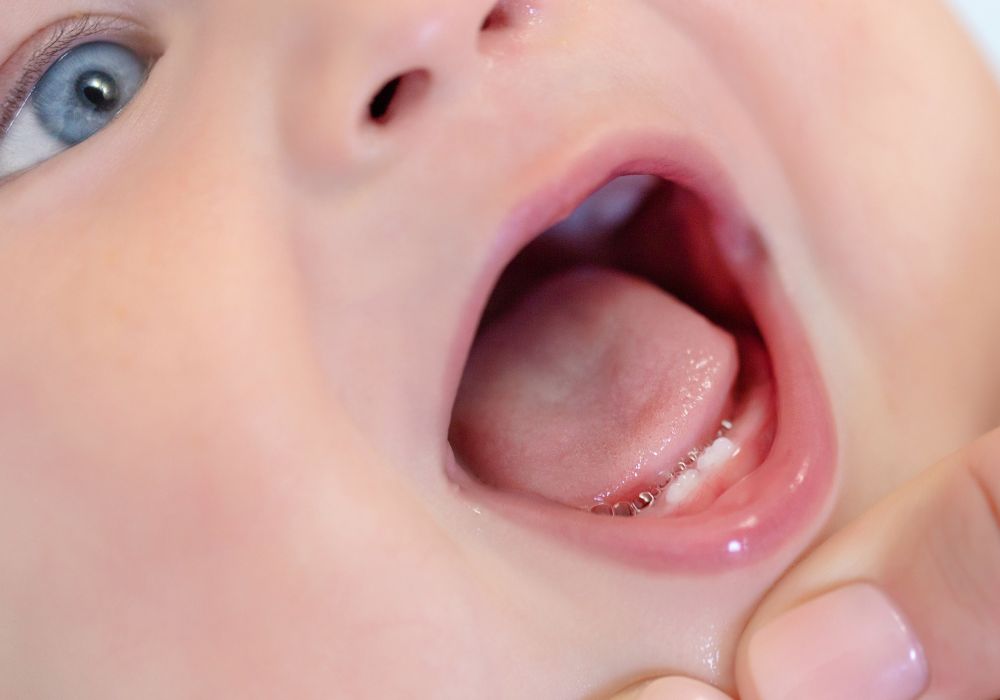
Q1: At what age do natal teeth typically appear?
Natal teeth generally emerge anywhere from birth to one month of age. Teeth present at the time of delivery or within the first 24 hours of life are most common. However, teeth erupting any time up to one month of age can still be considered true natal teeth. This distinguishes them from neonatal teeth which erupt between 1-30 days after birth.
Q2: How are natal teeth diagnosed?
Natal teeth will be visually diagnosed during routine newborn exams by a pediatrician, family physician, nurse practitioner, dentist or other healthcare provider. The provider will note the number of teeth present, their specific location in the mouth, appearance and integrity. Referral to a pediatric dentist is recommended for further assessment and management.
Q3: Should natal teeth be pulled or left alone?
Loose natal teeth should be extracted soon after birth to avoid risks. Stable natal teeth may be left in place short-term in rare cases with dentist monitoring. However, most often dentists will still recommend removal around 4-6 months as primary teeth erupt. Leaving natal teeth alone indefinitely is usually not advisable due to potential feeding, injury, decay and dislocation problems.
Q4: Do natal teeth mean anything about future teething?
No, the presence of natal teeth does not appear to be related to future teething timelines. After natal teeth are extracted, infants will continue to tooth normally between 4-7 months old. Having natal teeth does not seem to predict unusually early or late teething overall. The causes of natal teeth differ from normal teething processes.
Q5: Can natal teeth appear again with subsequent children?
Natal teeth do not directly follow hereditary or familial patterns. However, some extremely rare genetic syndromes associated with natal teeth like Ellis-van Creveld syndrome can run in families. In otherwise healthy children, having natal teeth in one baby does not necessarily mean future babies conceived by the same parents are at higher likelihood of also having them. Each conception should be considered an independent event regarding potential natal teeth.

